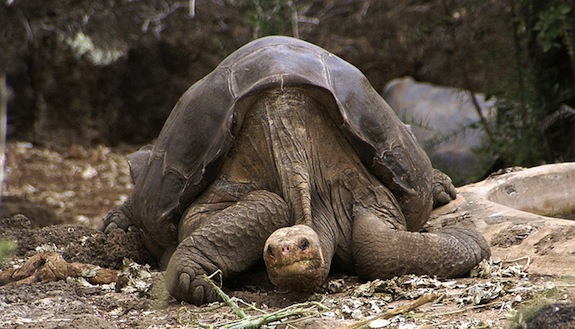The Last of His Kind, Tortoise Lonesome George Dies, Leaving No Offspring
For the first half of his life, Lonesome George lived on Pinta Island in the Galapagos. Once a thriving tortoise mecca, by the time a snail biologist discovered George there in 1971, the tortoise was the last of his subspecies, Chelonoidis nigra abingdoni. Dubbed “the world’s rarest creature,” George was transported to his new home, at the Charles Darwin Research Station, where for decades he would fail to reproduce. He was found dead, at age 100 or so (young by tortoise standards) by his keeper.
One characteristic of subspecies is that they can interbreed with related subspecies. But Lonesome George was not the most amorous fellow.
In 2007, Sveva Grigioni, a biologist who worked with George told the Guardian:
“He has problems…He probably never saw a female and male of his own species reproducing.”
Although he was at his sexual peak during his captivity, he lived with two prospective mates for fifteen years, from 1993, before he mated with them in 2008. Of the 13 eggs that results, all were infertile.
More from Smithsonian.com:
/https://tf-cmsv2-smithsonianmag-media.s3.amazonaws.com/accounts/headshot/Sarah-Laskow-240.jpg)

/https://tf-cmsv2-smithsonianmag-media.s3.amazonaws.com/accounts/headshot/Sarah-Laskow-240.jpg)